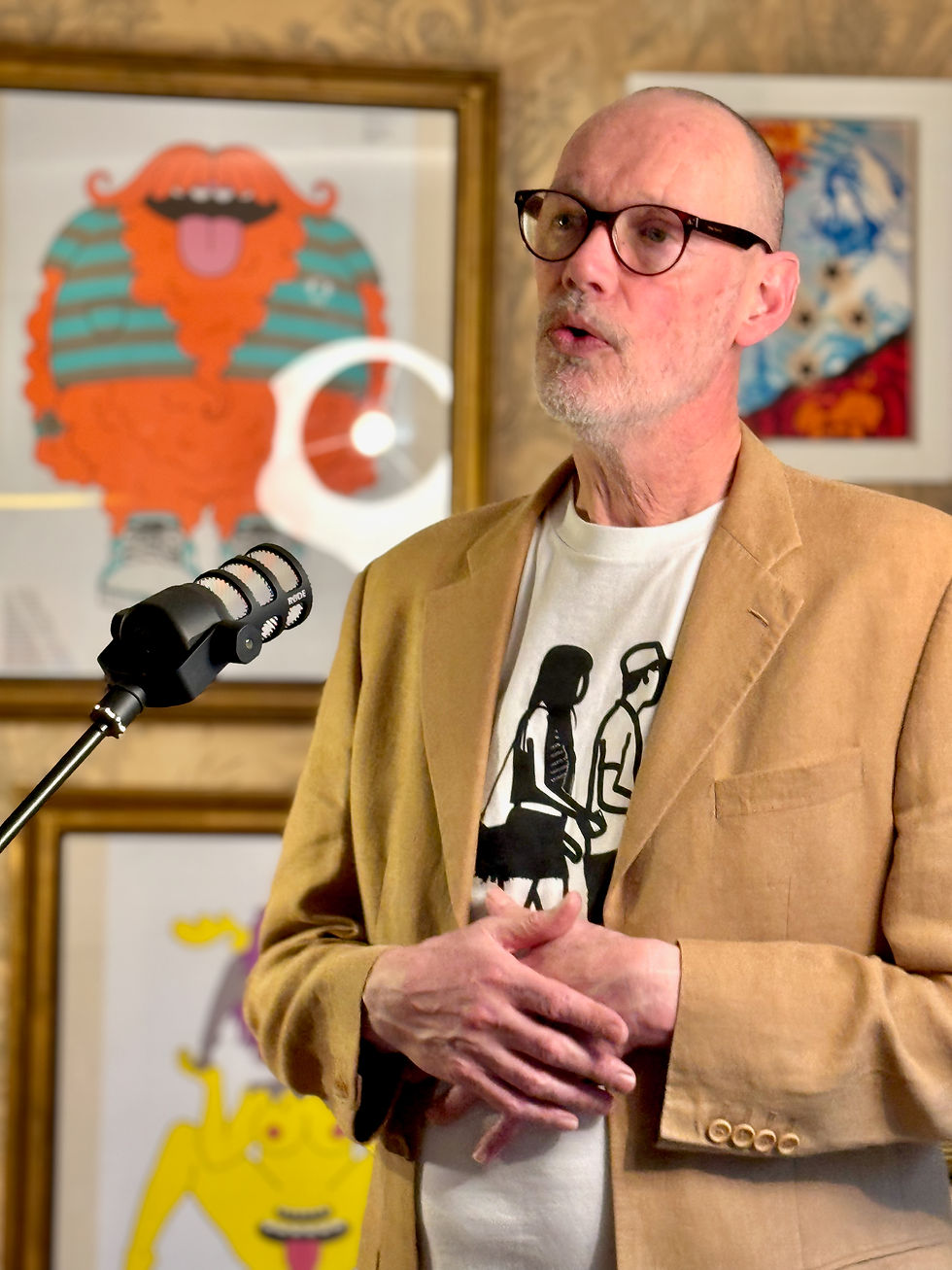Talks
Piers is an experienced and engaging public speaker, interviewer, chair for debates and conference author. He has given talks in 15 countries across 5 continents.
Each of these talks is designed to open our eyes to new ways of understanding our world. Fundamentally hopeful and optimistic, these talks also ignite discussion, challenge perspectives, and offer practical insights that attendees can apply immediately.
Wherever you are on your journey through uncertain times these sessions will leave you thinking differently about yourself and the world around you.
Designed to fit within a 60-minute session, including a short Q&A.

The Heart of Design Still Beats*
On Being a Creative Pioneer
The late 1990s saw a seismic shift in the creative industries— one that would transform cities, industries, and the way creatives develop their careers. In 1998, the same year the term "creative industries" was coined, I launched some of the first design and architecture festivals that would become the blueprint for creative city festivals worldwide.
Over the next two decades, I produced 65 major events in 10 countries, involving over 4,000 creatives from 38 nations, reshaping how the creative economy engaged with business, audiences, and spaces.
This talk explores the social, cultural, and economic forces that fueled this transformation - how these factors combined to spark the changes we now celebrate yet also the unexpected and unintended ways in which innovation can be lost to its own success. What happens when pioneering ideas become commodified? And how do we reclaim originality in an increasingly saturated creative landscape?
Key Takeaways
-
The rise of creative entrepreneurship and how festival culture helped reshape East London and beyond.
-
The power of bold, risk-taking ideas and the impact of reclaiming under utilised spaces.
-
The tension between innovation and commodification—and how to stay ahead of the curve.
-
What today’s creatives can learn from the early pioneers to build the next wave of transformative projects.
*Abitare Magazine 2003
On the Outside Looking Out
On Being Autistic
Being diagnosed as autistic aged 50 was both a moment of grief and relief—a deeply personal realisation that explained why I had always been seen as different and somehow suspicious. You see, I do see, sense, feel and interpret the world a little differently to most.
Being diagnosed autistic helped me build a new understanding of myself, recognising and coming to respect who I am. With an autism diagnosis, I began the journey of discovering how my differences also lie at the root of what makes me special.
This talk blends my personal journey with broader insights into neurodiversity, challenging outdated perceptions and offering practical strategies for inclusion. By understanding how neurodivergent individuals think, feel, and contribute, we open doors to new ways of working, creating, and collaborating.
Key Takeaways
-
Demystifying neurodiversity—what it is, why it matters, and how it’s shaping industries (stats and figures)
-
My story of navigating life as an autistic person.
-
The hidden strengths of neurodivergent thinking: pattern recognition, deep focus, and innovative problem-solving.
-
Practical strategies for inclusion—how individuals and organisations can better support neurodivergent colleagues and collaborators.
-
The emergence of niche neurodivergent businesses; servicing the needs of this large and increasingly vocal group.
Patterns in Non-linear Space to Guide Change
Great ideas rarely arrive fully formed. They evolve through relationships, iteration, and the ability to navigate uncertainty. Trinary is a framework I developed over years of working with creatives, identifying patterns in the roles, relationships, and interactions that drive innovation.
Rather than relying on rigid structures or linear thinking, Trinary introduces a flexible approach-led methodology to making sense of complex creative processes. It provides a new language to describe how we collaborate, how we transition from idea to execution, and how we balance different skill sets in turning concepts into marketable products and services.
Key Takeaways
-
Understanding Trinary—a fresh perspective on creativity, business, and collaboration.
-
Expanding the audience for design thinking methodologies with this lighter and more nimble Trinary approach.
-
Simple relationship patterns, to help teams navigate change and solve complex problems.
-
The intersection of creative business and nonlinear thinking—why traditional models fall short.
-
How Trinary can be applied within startups, established businesses, and large organisations to unlock new opportunities.
Piers' has got a lot of great insights around neurodiversity. Weirdly I relate to a lot of what he had to say.
From the 'On the Outside Looking Out' Talk at Toaster
Piers' presentation delivery was amazing - great storyteller, passionate Q&A, very helpful from a workplace perspective.
From the 'On the Outside Looking Out' Talk at Toaster
